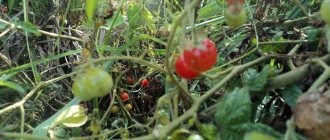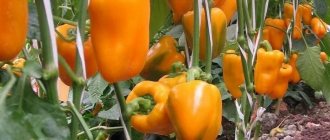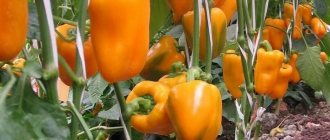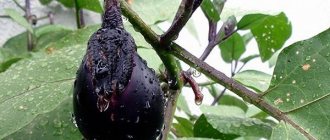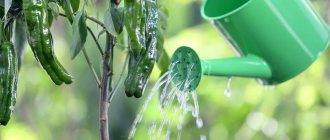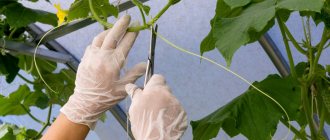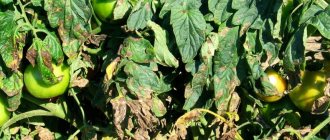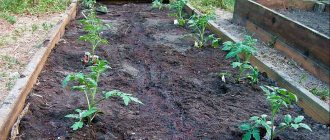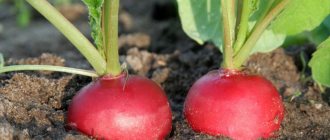Before learning how to form eggplants in a greenhouse, you should familiarize yourself with the rules of planting and care. Only if you follow all the tips together, you can count on a good harvest. It is important to study video advice from experienced agronomists and familiarize yourself with the rules prescribed by specialists.
Common Mistakes to Avoid
There are common misconceptions among beginning gardeners that prevent them from getting a good harvest:
- Eggplants do not need to be pinched and formed into a bush. As practice shows, this process can be eliminated only when growing low-growing varieties.
- Pinching plants is harmful, as it disrupts natural growth. However, removing the lower shoots helps fruit formation. In addition, plants are characterized by regeneration.
- The lower part of the stem does not need to be formed. This misconception can lead to the death of the bush. If the root zone is heavily shaded, putrefactive bacteria will begin to develop, and the lower part of the plant will take all the nutrients.
- All ovaries should be left at the bottom of the bush. In reality, the opposite is true - the closer to the top, the more fruits.
- All eggplants in one bed must be formed according to a single pattern. This is wrong. For each bush, the type of crown will be individual, it all depends on the rooting of the plant, its quality condition and variety.
What is it for?
The benefits of pinching eggplants, especially if done correctly, are invaluable. First, you prevent the plant from growing spontaneously, focusing its resources on fruiting. This is especially important for plants in a greenhouse, where conditions are more favorable than in open ground. Secondly, in this way you help the plant to develop by providing light access to all parts. This, of course, reduces the likelihood of fungal diseases or the development of harmful insects. Thirdly, pinching simplifies the care of crops and makes growing them a more enjoyable experience.
If growing this vegetable in open ground can be done without pinching, due to the early ripening of the plant, then in a greenhouse, especially one made of polycarbonate, you can’t do without it. However, if you don’t want to bother with shoots, then low-growing varieties come to the rescue, such as “Delicacy”, “Robin Hood”, “White Night”, “Almaz”, which grow well without pinching.
Recommendations for pinching peppers and eggplants
Do not use pruners to remove leaves and shoots. It is better to tear off unnecessary greens by hand. If this is not possible, disinfect garden tools before use. Otherwise, the risk of the bush becoming infected increases.
If the humidity level in the greenhouse is low, the foliage at the base of the bush should not be removed. By covering the ground, it retains moisture, preventing the soil from drying out. Dried and damaged leaves and ovaries should also be removed.
Do not use too much organic fertilizer if you are growing peppers and eggplants in greenhouse conditions. These crops develop well due to fertilizers, but foliage growth is also significantly enhanced.
Pinching plays a significant role in growing crops such as peppers, eggplants and others. But the main thing is to carry out this procedure correctly and on time.
It is not necessary to perform it in open ground. Although, if the distance between the bushes is small, they can be stepsoned so that they do not shade each other. In a greenhouse, it is advisable to always perform pinching. By properly pinching the bushes, you will ensure a large and high-quality harvest.
What do the “experienced” advise?
To achieve good results, it is very important to turn to the experience of people who know a lot about this difficult matter.
- In hot and humid weather, unnecessary lower stepsons must be removed; they contribute to an increase in root moisture and the development of viral and fungal infections.
- The lower stepsons are not removed only if the air in the greenhouse is excessively dry. They retain moisture, preventing it from quickly evaporating.
- If pinching is carried out using pruning shears or other garden tools, make sure they are sterile.
- Protect the greenhouse from artificial introduction of infection. Also treat your tools or hands after each plant to prevent the disease from spreading from an infected bush to a healthy one.
- Remove stepchildren in a timely manner, without allowing them to outgrow. So that the removed shoots do not draw vital nutrients from the crop.
Eggplant blossom - Do not apply too much organic fertilizer, it promotes abundant green growth of eggplants.
- Be sure to remove diseased or deformed leaves, this may be a signal for the development of a disease. The same applies to ovaries.
For clarity, use the video instructions.
Formation is a very important stage in growing eggplants; if it is not completed, you will get a small harvest with small-sized fruits. The bushes will grow and shade each other. This also threatens an increase in humidity and the spread of various diseases, such as white and gray rot.
Follow the advice of experienced gardeners, and you will get a gorgeous, healthy harvest at the end of the season.
Useful tips
To get a positive effect from stepsoning, follow the rules:
- Plants are picked by hand. It is not advisable to use scissors. If there is a need to use an instrument, it must first be disinfected.
- Pinch off shoots and leaves from each bush, after washing your hands with soap. Otherwise, there is a risk of transferring the infection from a diseased bush to a healthy one.
- A weakened plant cannot be pinched.
- In dry climates, the lower leaves are not removed. They help the soil retain moisture.
- Be sure to remove deformed leaves and ovaries.
- If more lower leaves have been removed than necessary, mulch the soil around the bush to protect it from drying out.
Common Mistakes
When growing and planting eggplant bushes, gardening beginners due to inexperience may make some mistakes.
The most common of them:
- Refusal to tie up the bush and remove excess leaves. This is fraught with shading of each other by plants and deterioration in quality lighting. Because of this, the bushes develop poorly and are more likely to become infected with diseases.
- Incorrect tying of the bush before pinching. Correct manipulation should be carried out directly next to the branching, where the most fragile part of the stem is located. The measure is necessary to protect the eggplant bushes from damage.
- Formation of bushes in too dry or rainy weather. The risk of infection by bacteria and fungi through the damaged area increases.
- Wrong time during the day for planting eggplant bushes. It is recommended to carry out the procedure early in the morning so that the plant has time to recover by the end of the day.
- Lack of shading after pinching manipulation in open ground.
- Lack of disinfection of working tools (secateurs) after cutting a diseased bush. This risks infecting healthy plants.
- Pinching weak plants. This can lead to even further weakening of the bush. The manipulation is postponed until the bush gets stronger.
How to carry out the procedure
Improper formation of bushes can lead to rotting of the root part or, if pruned excessively, to the death of the plant.
Growing eggplants is done by hand ; no tools are needed for this process, as they can damage the delicate stems.
Before treatment, wipe your hands with a disinfectant solution to prevent infection. If a pruner is used, it is also processed and ash or potassium permanganate is prepared for processing the cuts.
Before you begin to remove the stepsons, the bushes are tied up . Otherwise, there is a possibility that the stems will break off under the weight of the crown, since pruning greatly weakens them.
If the bush is formed into two stems, the garter is made below the branching point.
Formation instructions:
- three weeks later, all stepchildren are removed for the first time (time is counted from the day of disembarkation);
- thereafter pruning is carried out every 14 days.
There is no point in delaying the procedure, since not only the formation of the correct crown, but also the yield depends on this.
Advantages of stepsoning
Pinching involves the removal of certain shoots and (or) foliage on a crop. This is necessary to create the correct shape of the bush, strengthen it and obtain the largest fruits. Peppers and eggplants grow quite a lot of leaves and side shoots, especially if the ambient temperature is warm and there is enough moisture.
The disadvantage of a large number of leaves and shoots is that they take away a significant portion of the nutrients. As a result, the fruits have nothing to eat, they turn out small or dry out completely.
Many gardeners ask a logical question: do they plant eggplants and peppers? There is no clear answer to this question, since various factors must be taken into account.
When to start the procedure
Most often, the first removal of excess shoots on eggplants is carried out 3-4 weeks after planting the seedlings in a permanent place of growth. By this time, strong roots should have formed on the plants, and it will already have time to take root in the new environmental conditions.
At the same time, we are not talking about active growth yet, so any intervention at this stage will not be so traumatic. As for the specific time for performing the procedure, it is better that it be a dry day without precipitation, since high humidity or other unfavorable factors can provoke the development of infection in the cut areas.
In addition, when planning the procedure, it is worth moving it to the morning hours so that by the cold evening the wound has time to heal well.
The most common mistakes
There are a number of well-established opinions among vegetable growers, some of which are erroneous because they are based on outdated information.
Mistake No. 1. Eggplants and peppers do not need to be shaped and their stepsons removed.
In practice, pinching eggplant bushes is not done only for low-growing varieties. Usually, they are what summer residents and owners of personal plots prefer to grow, since some do not even know about the existence of hybrids with a stem height of more than 1 meter.
Mistake No. 2. Pinching is harmful to eggplant bushes and disrupts the natural development of the plant.
Pruning excess branches and leaves is actually a surgical intervention, but nature provides for a regeneration process, on the basis of which the entire formation of a fruit-bearing bush is carried out. Removing unnecessary branches allows you to direct all the plant’s forces to the formation and ripening of the maximum possible number of fruits.
Mistake No. 3. The lower part of the stem cannot be processed and formed.
A dangerous misconception that can result in the death of the plant. The fact is that just in the root zone, shaded by leaves, in conditions of poor ventilation, putrefactive bacteria actively multiply. In addition, the lowermost leaves and branches absorb more nutrients, and they simply do not reach the developing fruits. For this reason, all lower growth, including branches and leaves, must be removed. Only a couple of leaves remain, necessary to create a small amount of shade.
Mistake No. 4. More ovaries should be left closer to the root, because nutrients do not reach the top of the plant.
In reality, everything is just the opposite: the closer to the top, the more ovaries. To direct the plant’s forces to produce a harvest, there is no simpler solution than to pinch eggplant branches at the growing points.
Mistake No. 5. All plants in one bed should be formed according to the same pattern.
For each bush, its own form of crown formation is selected, depending on its variety, growth and quality condition at the time of planting the seedling in the ground.
https://youtube.com/watch?v=XGSpRghezCU
Removing excess branches and foliage has a positive effect on the fruiting of eggplants, since as a result of such intervention, all the vital juices of the plant rush to the ripening fruits. The procedure for forming a bush has a particularly strong effect on tall plants: their yield indicators significantly increase.
https://agronom.expert/posadka/ogorod/paslenovye/baklazhan/kak-formirovat-v-teplitse.htmlhttps://fermoved.ru/baklazhan/pasynkovat-v-teplice.htmlhttps://7ogorod.ru/paslenovyj- i-tykvennye-ovoshhi/baklazhany-v-teplice.html
How to form a bush correctly
To obtain a compact bush on which flowers, ovaries and fruits will form, you need to remove the top of the main stem on the plant. After this procedure, new side shoots begin to form on the bush. Most of the growth should be removed, leaving only the strongest.
There are several schemes for forming eggplant bushes. Their difference lies in the number of stems growing from the top of the main stem. There can be from one to three pieces. Each bush has its own formation scheme.
In a polycarbonate greenhouse
The formation of eggplant bushes growing in a polycarbonate greenhouse should be done when the plants reach a height of 25-30 centimeters.
In warm conditions, eggplants grow higher (up to 140 centimeters) than in open ground and therefore require adjustment of the bush.
Forming a bush with one stem is used for tall varieties. The top of the main stem produces new shoots after pinching. From all the shoots, the strongest one is selected, and other shoots are removed. Excess leaves and ovaries growing from below must be cut off. New shoots that appear during plant growth are removed.
Tall and medium varieties of eggplant are formed into 2 stems. After removing the top part of the plant, you need to leave 2 stepsons on which fruits will grow in the future. When other stepsons appear, they are regularly removed.
If the greenhouse is large and there are few eggplant seedlings, tall plants can be formed into 3 stems. Plants should be planted at a distance from each other (about 60-80 centimeters). On one of the selected two stems, a strong, strong stepson remains, which will later form into a new stem.
When shoots branch, the strongest shoot remains from each branch, which will be the main one. The weak shoot needs to be pinched after the second leaf growing above the ovary. There should be 1 fruit left on it. Other stepsons need to be pinched using the same principle. The bush should form 5-12 fruits growing on the main shoots.
In tall varieties, the main stems must be tied up separately, and you need to work with special care so as not to damage the fragile plant.
Plants in a greenhouse need to be tied using a trellis method.
- Twine trellises are pulled through the greenhouse in several steps. Z
- The twine must be secured to stakes driven into the edges of the rows.
- It is necessary to tie up bushes near each branch, preferably in places where fruits are formed.
- When tying, do not pull the twine too tightly, as it can damage the plant.
Low varieties of eggplant do not need to be pinched or tied. They do not exceed 40 centimeters in height and therefore easily tolerate tillering.
Forming eggplants in a greenhouse: video
https://youtube.com/watch?v=hnk_R9xEJYU
In the open ground
Eggplant bushes in open ground are formed 10-15 days after planting the seedlings. Stepchildren, shoots, leaves and ovaries must be removed manually. The tops of tall plants need to be pinched when they reach a height of 35 centimeters.
It is not recommended to pick off excess leaves on a rainy or hot day in autumn. When growing plants in open ground, formation occurs early in the morning or in the evening.
Wounds that form after removing leaves and shoots when working in the heat will be burned by the sun and take a long time to heal. It is recommended to cover them with wood ash or liquid lime.
If the plant is weakened due to the formation of a large number of fruits on it, then for such a plant a bush is formed into one stem. The strongest shoot remains, which is tied to the support.
There is no need to shape sick and weak bushes. It will not be possible to get a bountiful harvest from these plants.
Twice a week on the bush it is necessary to remove fruitless shoots, ovaries and shoots that form under the branching of the main stem. In dry and hot weather, the lower shoots can be left to protect the soil from drying out. In rainy summers, leaves and fruits should not touch the soil, otherwise they may become diseased.
To speed up the ripening of fruits, a month before the end of the growing season, the upper parts of the shoots need to be pinched. At the same time, further growth of the bush stops.
How to form eggplants in open ground: video
Choosing a bush formation scheme
The formation of an eggplant bush can be of two types:
- in one stem;
- into several stems.
A bush formed into 2 stems.
Choosing the right pattern is quite simple. It depends on the variety and quality of the seedlings.
The scheme for forming a bush with one stem is applied to a visually weak plant. This method is also chosen if the greenhouse is small - to save space. For such a bush, a vertical garter method is used using twine attached to a horizontally stretched wire. The ovaries are also thinned out. Only the largest ones are left.
A more effective scheme is the formation of 2 or more stems. After pinching the growing point, several upper shoots, the strongest, are left on the stem. The rest are deleted. The gardener decides how many shoots to leave after assessing the condition of the plant. On a strong stem, you can leave from 2 to 5 upper shoots, and if it is thin and weak, then leave 1 shoot or remove all of them.
Eggplant ovaries
If the correct formation scheme is chosen, then from each bush you can get about 20 fully ripened fruits per season.
Formation into one stem
Stepchildren need to be removed once a week
The single-stem formation scheme is used in open ground when growing vegetables in a humid southern climate. Greenhouse crops most need pinching in this way. An increase in humidity and temperature in greenhouses leads to the growth of bushes.
The 1-stem scheme is necessary when the crop has a weak stem that cannot support a large number of vegetables. It is used when the growing space of a vegetable is limited and when growing a tall variety.
You need to chop the eggplants like this:
- Pinch off the top of the stem when it reaches a height of 30 cm;
- Remove the top shoots after the lateral shoots grow, leaving 1 ovary.
- Every 7 days, remove excess leaves and shoots on branches.
- Remove flowers, tops, and small ovaries a month before the cold snap: they do not have time to ripen, but inhibit the development of large fruits.
Small green parts of the bush should be removed manually, without using tools. This prevents injury to the vegetable and infection. Large branches are cut with pruning shears and the cut areas are treated.
What varieties need to be formed
All varieties of eggplant require pruning of varying degrees of intensity when grown indoors. It is especially necessary to remove excess shoots for tall and medium-sized plants.
Vegetable growers' opinions are divided regarding dwarf varieties. Many people claim that they do not need any pruning, just removing damaged and drying leaves. But I experimentally verified that these varieties of eggplant also need some manipulations.
Expert opinion
Istomina Karina Bogdanovna
Agronomist with knowledge and skills in growing vegetables
Dwarf varieties are indeed capable of independently regulating their growth and the number of ovaries. But when grown in open ground. In a greenhouse, where conditions are especially comfortable, plants throw out shoots and ovaries abundantly.
There may not be enough food for all the flowers and leaves, so it is still useful to remove some of them:
- Remove the flowers formed at the bottom of the stem up to the fork.
- Leave 5 - 6 strong stems on the bushes.
- Remove leaves that have yellowed or lost turgor.
- A month before the end of the growing season, pick off flowers without an ovary.
Caring for young eggplants
Formation is one of the important processes that, like watering, is carried out throughout the entire growing season of the plant. But before its implementation, it is necessary to create favorable conditions for the growth of seedlings.
The beginning of eggplant flowering
Landing
When moving a young crop to a greenhouse, the planting pattern must be followed: from 30 cm between bushes and from 60 cm between rows. This way, the plants will not shade each other, and the gardener will have enough space to plant crops.
The plant should not be deeply buried when planting. It is best to plant seedlings together with a peat pot. The soil level should exceed the initial level by only 10-15 mm.
Eggplant in a greenhouse
Watering
The first watering of young eggplant is done 4 days after planting in the greenhouse. Water is applied at the root, try not to wet the leaves. Be careful not to form an earthen crust. To do this, loosen the soil in time.
It is very important not to overwater the eggplants. High humidity will definitely lead to fungal diseases
But a lack of water will also negatively affect the ovaries of the crop. The fruits will be small and tasteless.
Top dressing
The first fertilizer is applied 14-18 days after planting. Use complex mineral fertilizers. During the fruiting period, the plant is fed with fertilizers containing nitrogen and phosphorus.
Eggplants need to be watered only at the roots.
Conditions in the greenhouse
Eggplants love warm weather. They need 26-28°C to feel good. When the temperature drops, the crop slows down or stops growing, and when the temperature rises, it can even lose flowering and ovaries.
The greenhouse should be well ventilated throughout the entire period of plant growth, flowering and fruiting.
If all conditions are met, the young plants have become stronger, you can begin the formation of eggplants in the greenhouse.
Planting eggplants in a greenhouse should under no circumstances be thickened
Features of the pinching procedure
Cutting off the tips of the shoots helps the plant speed up the formation of new buds. As a result, new branches grow on the stem. The bush does not stretch in height, but grows in width. Accordingly, the number of ovaries increases, and the fruits fill faster.
Correct actions when forming eggplants in a greenhouse will bring the desired harvest, delivering invaluable pleasure to everyone who decides to care for this capricious, but very healthy and tasty vegetable.
How to peel eggplants?
When the bush grows to 30 cm, remove (pinch) the top flower at the top of the stem. The plant actively begins to grow in breadth, i.e. give side shoots. We begin pinching the eggplants. We remove the thin and weak ones and leave only the strong ones.
When forming a bush into one stem:
This method of formation is more suitable for use in greenhouses when there is a shortage of space, as well as for producing large fruits. Experienced gardeners operate according to the following scheme:
- When the plant reaches a height of 30 cm, all leaves and stepsons are removed up to the fork, leaving one leaf to feed the first ovary;
- Among two or three stems in a branch, the strongest is selected, the rest are removed;
- Pruning and removal of excess leaves is carried out every 7 days;
- The leaf near the first ovary is removed after its active growth begins (after 5-7 days);
- A month before the onset of cold weather, the top and flowers, as well as small ovaries, are removed; they will not have time to ripen and will interfere with the ripening of larger fruits.
This method of formation is also used for plants with a weak, thin stem; it will not be able to withstand the load of fruit on a branched trunk. In addition to excess shoots, leaves and flowers, do not forget to remove dried corollas from the growing ovary, which, in conditions of high humidity in the greenhouse, cause rotting.
How to form an eggplant bush into two stems:
- pinch the top of the main stem - the bush will begin to branch;
- we remove the side shoots and leave the two strongest ones - now, all the shoots that begin to appear must be removed.
To form an eggplant bush into three stems (when there is a lot of space and few seedlings):
- we leave the two strongest shoots;
- delete all others;
- We leave one strong stepson on one of the stems.
What you should pay attention to
- Bushes should not shade each other.
- We make sure that the branches do not intertwine. Otherwise, the plants will not be able to grow well.
- As soon as the bushes have branched, we begin to form skeletal branches.
- We select 1 strong stem from the branches - it will become the main one, and pinch the other one - after the second leaf above the ovary. Thus, we leave only 1 fruit.
- We go through all the branches and do this with each one, so that in the future at least 5–12 fruits will form on the eggplant bushes.
- During the growth process, we inspect the plants and remove the resulting sterile shoots that do not have ovaries.
- The ovaries and shoots that grow on the main stem below the branch are also removed.
- The soil under the bushes will not dry out in hot weather if it is mulched.
Why is shaping an eggplant a mandatory procedure?
Eggplant is a heat-loving crop, and in greenhouse conditions the bushes feel as comfortable as possible: they produce many shoots, densely covered with large leaves.
In the first year of growing these beauties in the greenhouse, I was happy with such a luxurious appearance and was firmly convinced that in the fall I would reap a rich harvest. But it didn't turn out that way at all.
Under the thick foliage on the bushes were hidden inconspicuous, small fruits. By the time the cold weather arrived, they did not even have time to ripen. Expectations of a large harvest did not materialize.
Only after receiving such a negative experience did I wonder why powerful, tall, dense bushes produced such a modest harvest. It turned out that it was this abundance of green mass that took away the plant’s strength.
The eggplants were actively growing shoots, and they had no energy left to flower and form ovaries.
And even the grown fruits could not fill and ripen because they did not receive enough sunlight. They were constantly in the shade of the leaves, so they remained small and pale.
The vegetable grower’s task is to remove excess shoots, defective ovaries and leaves shading the fruits. Only then will the eggplants form large, tasty fruits that will fully ripen before the cold weather.
Peeling eggplant
Pinching is a procedure for removing and pinching side shoots and small leaves from bushes. The procedure is carried out to strengthen the plant and form a beautiful bush that will produce a large harvest. It is not necessary to plant plants and form a bush, and crops can do without it and it is not required only in two cases:
- growing low varieties of plants that themselves are capable of forming neat bushes, as well as those varieties that do not have pronounced leaf mass;
- When planting eggplants in open ground, the lower leaves are not removed, because they are able to retain moisture and the soil does not dry out, but in a greenhouse it is completely different.
Is it necessary to plant eggplants in a greenhouse? Answer: definitely yes. How to plant eggplants correctly, so that the plant will later be pleased with a generous harvest? The procedure is best performed according to a small scheme:
- You need to leave one stem.
- In rare cases, leave 2-3 stems.
So, pinching eggplants in a greenhouse is the main feature of growing the crop, but how to do it correctly? Here are some tips:
- when growing eggplants in a greenhouse, when there is no space, it is important to leave only one stem;
- when the ovaries are thinned out, it is necessary to pinch the top;
- the remaining buds and shoots are removed;
- pinching eggplants in a greenhouse is carried out when the bush has reached a height of 30 cm. When the top is pinched, the bush begins to grow quickly, so it is better to remove the upper shoots and leave them short but strong;
- after the fruits appear, you need to leave only 20 pieces, and remove new stepsons;
- if the plant is strong and strong, then it is allowed to leave 2-3 young shoots, but taking into account the fact that there is room for growth;
- when the shoots begin to branch, you need to leave the largest one and pinch the top on the ovary and leave 1 fruit. As a result, there will be 12 ovaries on the bush;
- to speed up the ripening of fruits, every 5-7 days it is necessary to remove leaves and new ovaries, shoots and flowers that form below the first shoot;
- To speed up the ripening of the crop, after the fruits have already formed, you can pinch the tops of all shoots.
General rules for pinching
Eggplants love a lot of sun and warmth, so they are grown in a greenhouse. Basic rules that a gardener needs to know when growing eggplants in a greenhouse:
- If the day is hot and dry, then you can’t plant eggplants. In humid weather, it is imperative to remove excess sprouts;
- Before planting, you should carefully look at the bushes; if the stem is thick, the leaves are strong, and there are healthy shoots and fruits, then it is better not to plant it. This indicates that the plant has become stronger and does not require the pinching procedure;
- if the bushes are strong, then it is enough to remove the leaves from the lower trunk to the first ovary;
- after five fruits appear on the bushes, the top can be pinched;
- the trunk should always be empty at the bottom, without extra leaves and buds;
- remove yellow leaves immediately;
- when the fruits begin to ripen, you need to make sure that they are not in the shade, so the leaves that cover the fruits must be removed.
The scheme for growing eggplants in a greenhouse is quite simple. And for hybrid varieties that are grown not in a greenhouse, but in open ground, the scheme is slightly different:
- first you need to remove excess shoots from the bush;
- leave only strong stems;
- on all shoots where there are ovaries, you need to cut off the top so that the plant does not grow upward;
- the stepsons that will appear require removal, so that nutrients will go directly to the fruits.
Pruning in a greenhouse and in open ground should be done once every two weeks. If you do everything correctly and form a bush, then 12 ripe fruits from one bush is not the limit. It is necessary to cultivate the culture, but, most importantly, do not overdo it in this matter. Throughout the season, it is imperative to remove new stepsons; this will not only help facilitate the harvesting of the ripe crop, but also get rid of substandard fruits.
Now you know how to plant eggplants correctly and a detailed diagram of the procedure in a greenhouse, but you also need to know about fertilizing the crop. When growing blue fruits in a greenhouse, the main thing is not to overdo it with fertilizers. Eggplants respond well to fertilizing, but at the same time they begin to grow green mass, which has a bad effect on the formation of ovaries.
When not to do it
Despite the recommended procedure for pinching eggplants, there are situations when this is not required. For example, when growing low-growing varieties, there is no need to worry about excessive thickening of plantings, since the bush will not form excess greenery.
You don’t have to worry about pinching when growing eggplants in open soil in large, light areas of the garden. In severe drought, the leaves of the plant will form a kind of shield that protects the substrate from excessive drying out. Moreover, in open space the leaf mass does not grow so quickly, so the bush will not be able to become overgrown.
Sometimes the procedure for planting eggplants is abandoned even when the stems of the crop look thick and persistent, with dense and healthy stepsons extending from them. All of them indicate a sufficient amount of nutrients inside the bush and no need for their redistribution.
Did you know? The most useful are the oblong eggplant fruits, blue-black in color with a shiny surface. Typically, such varieties have a limited number of seeds, which can be considered as an additional advantage of the plant.
Planting eggplant seedlings in a greenhouse
Eggplants have very delicate roots. They are easily damaged during transplantation, which significantly lengthens the survival period of plants. The roots receive the least damage when growing seedlings in seedling cassettes. If possible, it is most practical to plant seedlings grown in peat-humus or peat pots without removing the plants.
Some gardeners advise carefully cutting the sides of the pot. You can remove the bottom, so the root will freely grow deeper and not bend while the bottom of the peat pot rots in the soil.
Eggplants are heat-loving plants whose root system does not tolerate low temperatures. Therefore, before planting the plants, the soil in the greenhouse must warm up to a temperature of +15...+16°C, and the air - to +18...+19°C, not lower.
It is better to plant in the morning or in cloudy weather. If the conditions are different, then it is necessary to shade the planted plants, especially in the first 3-4 days after planting.
Before planting (2-3 days before), the soil must be leveled and watered until moist (not wet). Watering is necessary because eggplant roots are very delicate and dry soil can damage them.
Eggplant bushes, even low-growing ones, are quite voluminous and spreading, so planting is carried out in one row (if the area allocated for the crop is small), leaving a distance of 40-45 cm between the bushes. If the area allows, you can thicken the planting by arranging the bushes in 2 rows in in a checkerboard pattern with a distance between rows of 50-60 cm, and in a row 35-40-45 cm (depending on the type of bush).
Having chosen a planting scheme, prepare planting holes 12-18 cm deep. Place a handful of wood ash into the hole and mix it with the soil. If the soil has not been fertilized, you can add fertilizer to the hole before planting. Pour up to 1.0-1.5 liters of warm water into the hole (preferably a light solution of potassium permanganate).
The seedlings are planted together with a soil ball. Bare roots will certainly be damaged and it will take 10-15 days for such plants to take root, which will subsequently affect the timing of an early harvest. Gently crush the plant in the hole (without pressing), lightly water it again from above. The planting is mulched with fine dry humus, high-moor peat, 2-3-year-old sawdust or other mulching material.
Note! The survival of the plant is indicated by the appearance of a new leaf on the planted bush. Eggplant seedlings are planted together with a soil clod
How to properly peel eggplants?
Correct stepsoning is a combination of two factors:
- Correct determination of the date of the first procedure.
- The optimal scheme for forming a bush for each plant.
It is best to start fighting unwanted additional shoots in the third week after you arrange the seedlings in a permanent place. At this moment, the eggplants had already completely taken root, but had not yet directed their energies towards intensive growth. After the first stepsoning, do not forget to consistently repeat this procedure once every two weeks.
Follow a few simple and important rules:
- Before planting, be sure to tie up the bushes - a large number of ovaries can simply cause the planting to break. To do this, a wire is stretched over the rows of plants, to which each eggplant is tied using twine or rope. A garter is needed under each branch of the bush.
- Do not perform the procedure in either too dry or too humid weather. Such conditions can provoke the development of infectious processes in the damaged area of the stem.
- The best time for stepsoning is morning. During the day, the eggplant bush will have time to “heal” its wound.
Some tips from experienced gardeners
Many gardeners who grow this crop have already gained experience and give advice to beginning farmers.
- It is necessary to remove the lower stepsons only when there is continuous rain. Since they retain moisture and can cause various diseases.
- In greenhouse conditions, on the contrary, under no circumstances should the lower stepsons be removed. Because indoors it lacks moisture. And the stepsons will just keep it in the soil.
- The tools that the farmer will have to work with must be sterilized to prevent infection of the plant.
- After the bush has been formed, it is necessary to disinfect the tools with an antiseptic and only then proceed to the next bush.
- The procedure must be carried out on time.

